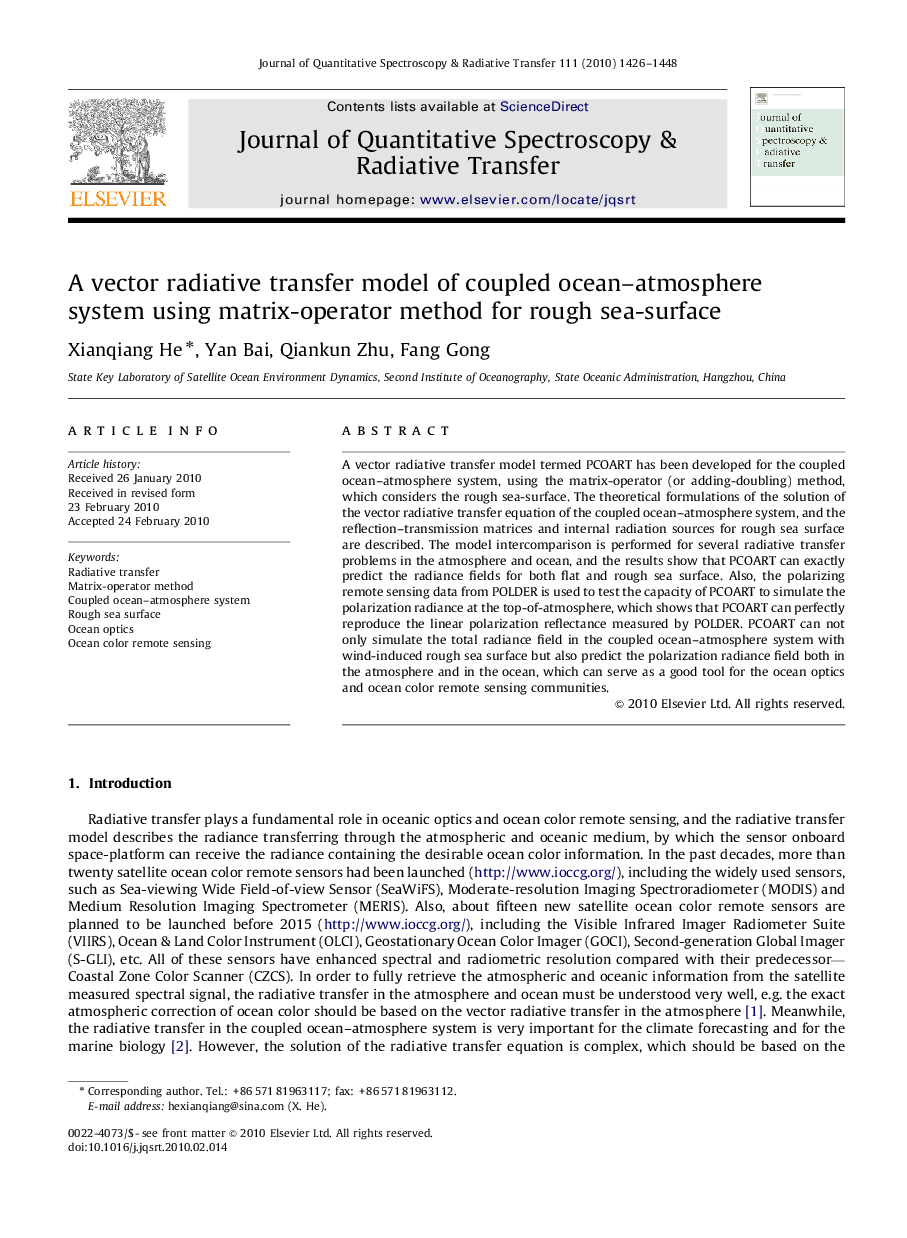| Article ID | Journal | Published Year | Pages | File Type |
|---|---|---|---|---|
| 5429388 | Journal of Quantitative Spectroscopy and Radiative Transfer | 2010 | 23 Pages |
A vector radiative transfer model termed PCOART has been developed for the coupled ocean-atmosphere system, using the matrix-operator (or adding-doubling) method, which considers the rough sea-surface. The theoretical formulations of the solution of the vector radiative transfer equation of the coupled ocean-atmosphere system, and the reflection-transmission matrices and internal radiation sources for rough sea surface are described. The model intercomparison is performed for several radiative transfer problems in the atmosphere and ocean, and the results show that PCOART can exactly predict the radiance fields for both flat and rough sea surface. Also, the polarizing remote sensing data from POLDER is used to test the capacity of PCOART to simulate the polarization radiance at the top-of-atmosphere, which shows that PCOART can perfectly reproduce the linear polarization reflectance measured by POLDER. PCOART can not only simulate the total radiance field in the coupled ocean-atmosphere system with wind-induced rough sea surface but also predict the polarization radiance field both in the atmosphere and in the ocean, which can serve as a good tool for the ocean optics and ocean color remote sensing communities.
